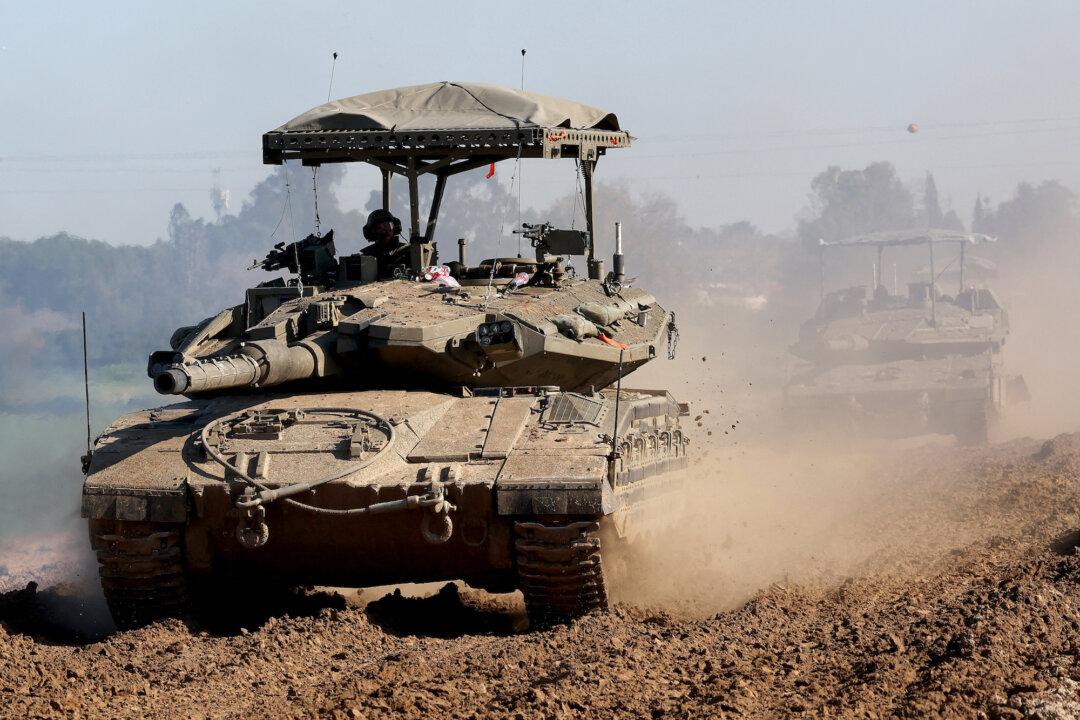Israeli Prime Minister Benjamin Netanyahu has rejected terms proposed by Hamas to pause the fighting in Gaza, saying that “total victory” against the terrorist group could be achieved within months.
During a Feb. 6 news conference held shortly after a meeting with U.S. Secretary of State Antony Blinken, Mr. Netanyahu said it’s only a “matter of months” before Israel achieves its military goals—that is, to eradicate all of Hamas’s fighting forces in Gaza and destroy the entire underground tunnel network.
“There is no other solution but a complete and final victory,” he told reporters. “If Hamas will survive in Gaza, it’s only a question of time until the next massacre.”
When it comes to ceasefire talks, Mr. Netanyahu dismissed demands raised by Hamas as “bizarre,” saying that negotiation with the group that rules Gaza is “not going anywhere.”
Negotiations are continuing, with the governments of Qatar and Egypt acting as mediators. On Feb. 6, Hamas put forward a ceasefire plan consisting of three phases, each lasting 45 days.
During the first phase, Hamas would be expected to release certain groups of hostages it captured during the Oct. 7, 2023, attacks in southern Israel. That would include all female hostages, male hostages under 19, as well as all elderly and sick hostages. In exchange, female and underage Palestinian prisoners would be released from Israeli jails. This phase would also see Israel pulling back troops from populated areas.
Implementation of the second phase wouldn’t begin until both sides finished “indirect discussions” about the requirements necessary for them to stop fighting and “restore complete calm.” Israeli troops would be expected to completely withdraw from Gaza during the second 45 days.
Adult male hostages not freed during the first stage would be released during the second, and the bodies and the remains of hostages who died while in Hamas’s custody would be handed over throughout the third. By the end of the third phase, Hamas would expect both sides to have reached an agreement on a permanent ceasefire.
The three-stage plan was put out as a counterproposal to a blueprint drawn up by the United States, Israel, Qatar, and Egypt. Mr. Blinken, who landed in Jerusalem on Feb. 6 on his fifth tour of the Middle East since October 2023, was calling for a six-week pause of the Gaza War.
“We’re looking at it intensely, as is, I know, the government of Israel,” Mr. Blinken said of Hamas’s counterproposal after meeting with Israeli President Isaac Herzog. “There’s a lot of work to be done, but we are very much focused on doing that work, and hopefully being able to resume the release of hostages that was interrupted.”
The top U.S. diplomat also called for the continuation of humanitarian aid into Gaza. This plea comes as Israel declared that it wouldn’t allow the United Nations Relief and Works Agency for Palestinian Refugees, or UNRWA, to operate in post-war Gaza. The Israeli government said it has found evidence that 12 of the agency’s staff members participated in the Oct. 7 attack.
“There are so many innocent men, women, and children who are suffering as a result of the attacks perpetrated by Hamas and are now being caught in the crossfire of Hamas’s making,” Mr. Blinken said.
“We all have an obligation to do everything possible to get the necessary assistance to those who so desperately need it, and the steps that are being taken—additional steps that need to be taken—are the focus of my own meetings here.”







